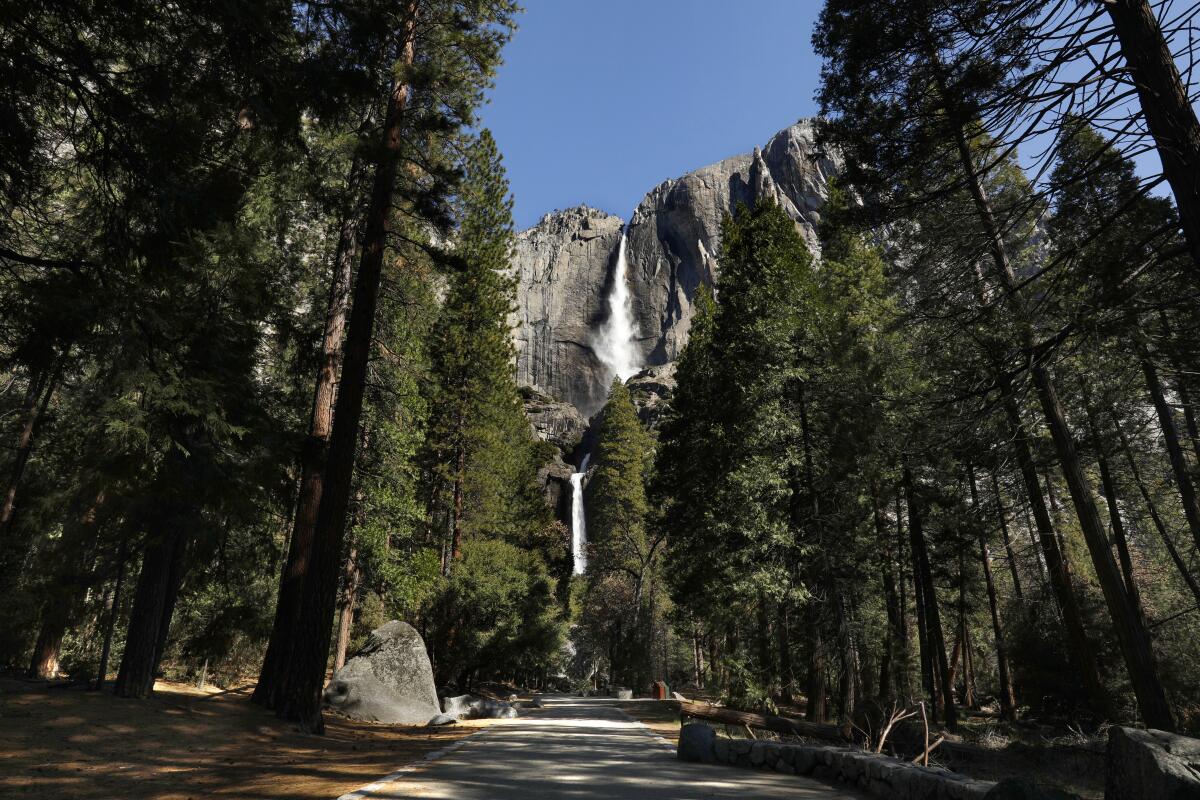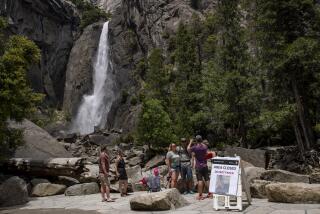Want to go to Yosemite this summer? Set an alarm on March 23

- Share via
In a bid to fight long-standing troubles with summer congestion, Yosemite National Park will impose a peak-hour reservation system from May 20 through Sept. 30.
The reservations, which carry a $2 nonrefundable fee, will be available beginning 8 a.m. on March 23 through recreation.gov. Each reservation will be valid for three days.
The move, announced today, means that visitors will need a reservation to enter the park between 6 a.m. and 4 p.m., seven days a week. The requirement includes annual and lifetime pass holders, and is in addition to the park’s $35-per-car entrance fee, which is also good for three days while the reservation system is in effect. (Otherwise, it’s good for seven days.)
However, anyone who books lodging, camping or vacation rental reservations within the park is automatically included in the peak-hour reservation system, the National Park Service said. The same goes for visitors with wilderness and Half Dome permits, and for visitors who enter the park via YARTS (Yosemite Area Regional Transportation System) buses or on commercial tours.
Visitors who enter the park outside of the peak hours are not required to have a reservation, park management said, and those visitors are allowed to remain in the park through peak hours.
Also this year, the Park Service statement said, infrastructure improvement projects will require closure of several park areas and change traffic circulation in some areas. Most notably, the Glacier Point Road, Tuolumne Meadows Campground, Crane Flat Campground and other sites will be closed throughout this year.
Under the Park Service’s plans, 70% of reservations for all dates from May 20 through Sept. 30 will be available on recreation.gov on March 23. The remaining 30% will be made available on a rolling basis seven days before the arrival date. (In other words, some Aug. 30 reservations will become available on Aug. 23.)
The park posted an FAQ page with details of the new program.
Park officials said the strategy builds on lessons learned during 2020 and 2021, when the park put summer reservation requirements in place to cut congestion. Though the reservations requirements in those years coincided with pandemic measures, Yosemite’s struggles with summer overcrowding go back decades.
The park drew 3.3 million visitors in 2021, NPS statistics show, which made Yosemite the 21st-busiest park in the system and the busiest in California. (The busiest nationwide: Blue Ridge Parkway, where rangers counted 15.9 million visitors along its route through Virginia and North Carolina.)
The National Parks Conservation Assn. voiced its support for Yosemite’s move in a prepared statement from its Sierra Nevada program manager, Mark Rose.
“As problems with overcrowding have worsened in recent years, reservation systems have proven very effective in combatting the endless traffic, crowded trails and long lines for facilities that plague overcrowded national parks,” Rose said. “We’re pleased the reservation system will be returning to Yosemite this summer so that visitors can have the best experience possible while protecting the park from the damage that overcrowding can bring.”
More to Read
Sign up for The Wild
We’ll help you find the best places to hike, bike and run, as well as the perfect silent spots for meditation and yoga.
You may occasionally receive promotional content from the Los Angeles Times.







